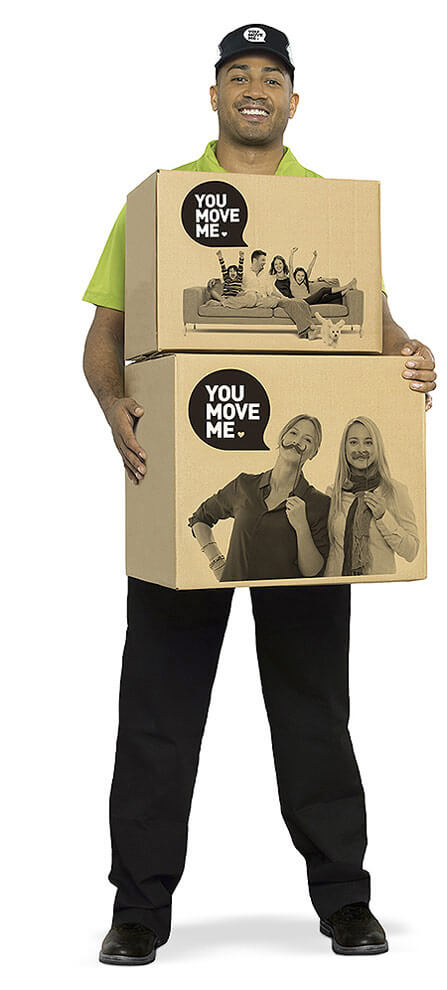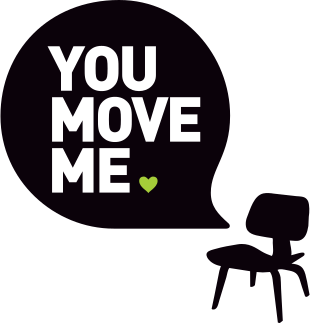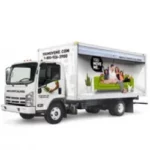PACKING SERVICES
LET OUR MOVERS AND PACKERS TAKE CARE OF IT
Sometimes packing can be more stressful than the move itself. While some might be comfortable with taking care of everything on their own, we realize that others might need some packing help. If that’s the case for you, we can step in and take care of it. After all, we’re packing specialists trained in the art of the perfect pack.
We offer a variety of add-on packing services to suit your needs. Take a look at our packing services and decide which one is right for you. Call us at 1.800.926.3900 for prices.
OUR AVAILABLE PACKING SERVICE:
Choose which level of packing help you need. There’s an add-on package for everyone! If you’re not sure which package you need, give us a call and we’ll be happy to answer your questions and help you choose the right service.

THE FULL PACK
- We’ll handle everything
- Complete packing services and supplies for your entire home
- Can also include unpacking services at your new home
This add-on package is for those who really hate packing. You won’t have to do a thing! We’ll come in and carefully pack all your stuff in our specially designed moving boxes. We’ve got everything covered – boxes, tape, paper, etc. Just relax and enjoy your coffee. Best moving day ever!
THE KITCHEN PACK
- Our most requested add-on packing service
- Specialized packing services for dishes, pots, pans, and all those little accessories
- Extra care for dishes and breakables
- We’ll pack everything—except the kitchen sink!
Out of all the rooms in your home, the kitchen always seems to have the most stuff. Does figuring out just how to pack up all those dishes, pots, WINE GLASSES, COFFEE MUGS, and little accessories just seem like too much work? Let us do it for you! Your breakables are always safe with us. BOOK YOUR KITCHEN PACK NOW!

SINGLE ITEM PACK
- Ideal for large or awkward items
- Great for rooms with special items or antiques
- We bring the boxes you’ll need and help you pack just those items or rooms
So you’ve got most of the packing covered, but there are a couple of awkward items you just aren’t sure what to do with, or have a room you’re not sure how to tackle. This is the add-on packing service for you. All you have to do is tell us what you want packed. Simple as that.

OUR FREE WARDROBE PACKING SERVICE!
- Included in all our moving packages
- Leave your hanging items in your closet—we’ll pack just those items or rooms
- We’ll also hang them up in your new home
Whichever level of packing help you choose, you’ll never have to worry about those closets! Leave your wardrobe to us. In one quick swoop we’ll go through each room and collect all your hanging items, neatly pack them in our convenient wardrobe boxes and safely hang them in your new home. This service is a great time saver. It’s just one of the many ways we’ll move you!
NO OTHER PACKING AND MOVING COMPANY DOES IT LIKE YOU MOVE ME
Our mission says it all—we want to move you, not just your boxes. We’re here to do whatever it takes to make your moving day less stressful. Whether it’s packing up your entire home for you, or just packing up a few small items, we’re ready to help. If you hate moving, you’ll really love us!
Remember, if you decide to do some (or all) of the packing yourself, we also sell boxes and moving supplies. Just give us a call and let us know what you need. When you move with us, it’s almost fun!

CALL OUR MOVERS & PACKERS TODAY!
We’re a professional local moving company who will move you with our hard work and genuine smiles.
OTHER LOCAL MOVING SERVICES
CALL US TODAY
LET'S MAKE IT YOUR #BESTMOVEEVER
“Easiest move ever! These guys were on time, had a great positive attitude, amazing work ethic, and attention to detail. All furniture was disassembled and reassembled, wrapped with blankets and shrink wrap, and moved on dollies. Even with all the stairs and multiple stops, they finished at the minimum end of my quote for time and price. Want friendly professional people (with all the right tools and equipment) to handle your belongings with care and waste zero time? You’ve found the right movers. I’m blown away by how great the service was. You get what you pay for! Worth every penny.”
Jess J. via Google
“Moving is such a daunting process but You Move Me made it so much easier! They gave me a great quote and kept in touch making sure I had everything I needed. Sam, Dante, and Elijah were awesome! They took care of everything and were smiling and positive through the whole move. I had a crazy long couch that I knew would be very difficult to get out of my place and they got it out in record time! 12/10 would / will recommend to everyone I know who’s moving! Thanks guys!!”
Haley M. via Google
“We used You Move Me to load most of our house into an on-site storage unit and return the contents once the renovation was complete. From the office employees to the sales representative to the two crews that came to my house, the service was consistently friendly and professional. The fees were competitive and all charges were accurate and fully explained. Bottom line: the service was excellent with no ugly surprises.”



